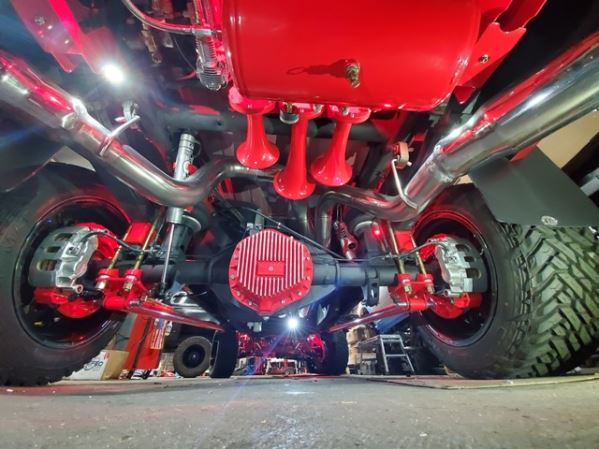
This article originally appeared in the July 2020 issue.
Nothing emphasizes an aggressive-looking truck like a powerful train horn. We’re not exactly promoting it, but for “entertainment purposes only” a quick YouTube search is sure to put a smile on your face. Those who do drive-by horn-blasting seem to get a lot of views--just saying.
While we’ve seen horn setups on a variety of vehicles, full-size pickups tend to work best because of the extra space available. Of course, you need to use the horn wisely and carefully too, because it can pose a danger to others (and you could face legal charges) if you don’t. I’ve seen plenty of those videos of people foolishly blasting their horns in town and scaring crowds on purpose, and of course these seem to be the ones going viral and getting a lot of views. Just be responsible since some people take horn-blasting better than others.
Plenty of video viewers love to hear the sound of the Doppler Effect as the horn approaches the camera and then passes it, both on real trains and on road vehicles. Train horns have a special musical sound like no other, mainly because of their multiple chimes with a wide range in pitch. Sometimes these horns are even used on ambulances and fire trucks.
Real Horns vs. Imitations
In my humble opinion, horns tend to sound better when they’re actual train horns installed on trucks rather than the cheaper and less legitimate ones. Those cheaper ones, from my own observation, tend to be the ones used more foolishly around town. Of course, that’s not always the case. By actual train horns, I mean ones from big names such as Nathan-AirChime, Leslie Controls, and the Westinghouse Air Brake Company (WABCO) that are and were used on real freight and passenger trains. Nathan-AirChime and Leslie are still around today, but WABCO no longer manufactures horns. HornBlasters offers train horn setup kits featuring horns such as the Nathan-AirChime K3LA and K5LA train horns, two of the most popular horns that have been used in North America for years on railroads such as Amtrak, CSX, Norfolk Southern, BNSF and Union Pacific. You may also be lucky to have connections to railroads or auctions that will sell a retired Nathan-AirChime, Leslie, or WABCO horn that needs new life.
One downside to getting a real horn though, especially ones with larger bells, is the amount of air needed. You’ll definitely need a large air tank and compressor for it and that’s why they make the most sense on pickups compared to other vehicles. In a way, it explains why locomotives and cab-control passenger rail cars operate on more pneumatics than even your average large truck or bus. That’s why plenty of folks choose the less legitimate horns as well. As you might think, the cheaper horns meant to imitate real train horns are easier to come by and tend not to require as much air for operation as their genuine counterparts.
Decision Time
Hopefully, this information gave you some background on what’s out there and will help you make an informed decision about whether or not to invest in train horns for your truck. These horns are becoming more and more popular with pickups, including diesels. Because a horn adds so much status to your truck, it’ll definitely make it more show-worthy. Just search for keywords such as “train horn run-by” and you’ll see what I mean, even though not all the videos that come up will be of diesels.
Speaking of HornBlasters, in the previous issue, we featured a 2011 Duramax that had an AirChime K3LA train horn on it and the 2015 Power Stroke cover feature this month includes the Nathan-AirChime K5LA.